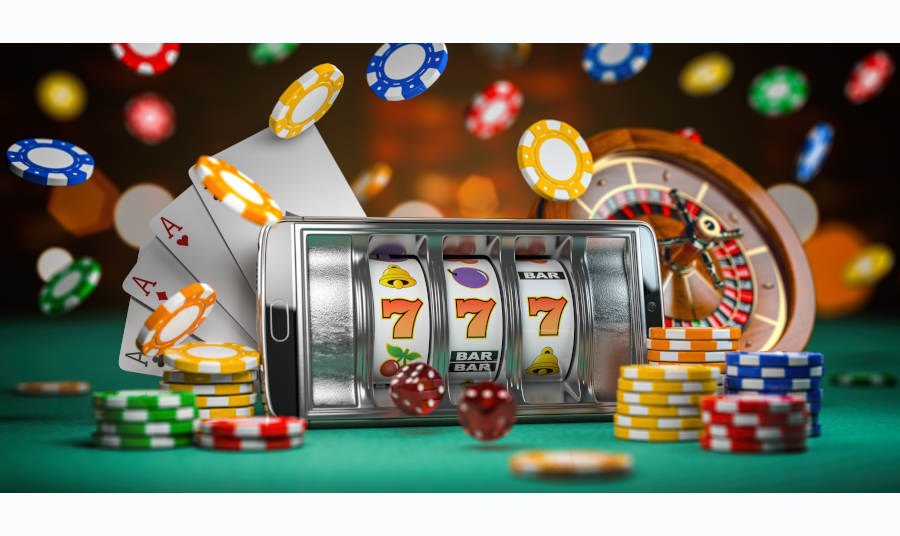Understanding the Psychology of Anticipation in Entertainment
We live in an era where capturing and maintaining attention has become the ultimate currency. Among the countless forms of entertainment competing for our engagement, two seemingly disparate mediums have perfected the art of anticipation: literature and slot machines. The cliffhanger at the end of a novel’s chapter and the suspended moment before the reels settle in a game like the le cowboy slot demo operate on an identical psychological principle. While books and slots may appear worlds apart, they share a fundamental psychological mechanism that keeps audiences returning for more. Both leverage the power of anticipation, that electric moment before resolution, to create deeply engaging experiences that resonate with our most primal cognitive patterns.
The human brain is hardwired to seek patterns, predict outcomes, and experience pleasure not just from rewards themselves, but from the anticipation of those rewards. This neurological reality forms the foundation upon which both novelists and game designers build their most compelling creations. When we understand how these two industries manipulate anticipation, we gain insight into the mechanics of engagement itself.
The Cliffhanger: Literature’s Most Powerful Weapon

Historical Origins and Evolution
The cliffhanger has been a staple of storytelling since serialized fiction became popular in the 19th century. Charles Dickens mastered this technique, ending installments of his novels at precisely the moment when readers desperately needed to know what happened next. This wasn’t accidental—it was a calculated strategy to ensure readers purchased the next installment. The term “cliffhanger” itself originated from Thomas Hardy’s “A Pair of Blue Eyes,” where a character literally hangs from a cliff, his fate unknown until the next chapter.
Today, the cliffhanger has evolved far beyond its Victorian roots. Modern authors employ this technique with surgical precision, understanding that the gap between question and answer creates a cognitive tension that readers find irresistible. Television series have adopted this approach wholesale, with season finales designed to generate months of speculation and anticipation.
The Neuroscience Behind Narrative Suspension
When we encounter a cliffhanger, our brains enter a state of heightened arousal. The anticipation of resolution triggers dopamine release—not when we get the answer, but in the moments before we receive it. This is crucial: our brains are more activated by the possibility of reward than by the reward itself. A well-crafted cliffhanger exploits this mechanism, creating a cognitive loop that demands closure.
Research in narrative psychology has demonstrated that readers experience genuine distress when stories are left unresolved. This phenomenon, known as the Zeigarnik Effect, explains why we remember unfinished tasks better than completed ones. Authors leverage this effect deliberately, knowing that an unresolved plot point will occupy mental real estate long after readers close the book.
Techniques Writers Use to Build Anticipation
Masterful authors employ several sophisticated techniques to build anticipation throughout their narratives. Foreshadowing plants seeds of future events, creating a subtle unease that something significant approaches. Red herrings misdirect attention, making eventual revelations more surprising and satisfying. Multiple timelines allow writers to control information flow, revealing some answers while withholding others.
The most effective cliffhangers operate on multiple levels simultaneously. They might resolve one question while raising several new ones, creating a cascade of anticipation that propels readers forward. They balance satisfaction with curiosity, providing just enough resolution to feel rewarding while opening new narrative doors that demand exploration.
The Near-Miss: Slot Machines and the Illusion of Almost Winning

The Architecture of Slot Machine Psychology
Slot machines represent one of the most psychologically sophisticated forms of entertainment ever designed. At their core, they manipulate the same anticipatory mechanisms that cliffhangers exploit, but with even greater precision. The near-miss effect—when symbols almost align to create a winning combination—creates a powerful illusion that victory was tantalizingly close, encouraging continued play.
Modern slot machines are engineered to maximize this effect. The spinning reels, the cascading symbols, the brief moments of suspension before the final position settles—every element is calculated to extend anticipation and create the perception of agency. Players feel they’re on the verge of success, that the next spin might be the one that pays off spectacularly.
Dopamine and the Anticipation of Reward
Neuroscientific research has revealed that slot machines trigger dopamine release in patterns remarkably similar to those seen with addictive substances. The key insight is that dopamine primarily signals reward anticipation rather than reward itself. Each spin creates a moment of possibility, and our brains respond to this possibility with a neurochemical cascade that feels pleasurable regardless of the outcome.
The variable ratio reinforcement schedule employed by slot machines—where wins occur unpredictably—creates the strongest possible conditioning response. Unlike fixed schedules where rewards appear at predictable intervals, variable schedules keep anticipation constantly elevated because the next reward could always be imminent. This is the same mechanism that makes social media notifications so compelling and email checking so habitual.
Visual and Auditory Design Elements
Every aspect of slot machine design serves to amplify anticipation. The visual elements—bright colors, movement, near-miss displays—capture attention and create excitement. The auditory components are equally important: the sounds of spinning reels, the musical flourishes that accompany wins, and even the specific tones that play during near-misses all contribute to an atmosphere of perpetual possibility.
Research has demonstrated that near-misses activate the same reward centers in the brain as actual wins, creating what psychologists call a “win in disguise.” Players experience near-misses as meaningful events rather than losses, interpreting them as evidence that they’re getting closer to success. This cognitive distortion keeps players engaged far longer than pure randomness would suggest.
Parallel Mechanisms: How Both Mediums Hijack Attention
The Power of Unresolved Tension
Both cliffhangers and near-misses create states of unresolved tension that our brains find difficult to ignore. This tension isn’t merely uncomfortable—it’s actively pleasurable in moderate doses. We’re drawn to the edge of resolution, to that moment when the outcome hangs in balance. Both books and slots understand that the journey toward resolution often feels more engaging than the resolution itself.
This shared mechanism explains why we’ll stay up late finishing a novel despite exhaustion, or why slot players continue despite mounting losses. The anticipation has become its own reward, creating a feedback loop that supersedes rational decision-making. We’re not just seeking the outcome; we’re seeking the feeling of seeking the outcome.
Timing and Pacing in Building Suspense
Both mediums demonstrate sophisticated understanding of timing. Authors know that cliffhangers work best when readers are deeply invested, when the stakes feel genuinely significant. They carefully build anticipation across chapters and sections, creating rhythms of tension and release that keep readers engaged across hundreds of pages.
Similarly, slot machines carefully pace their rewards and near-misses. Modern machines use algorithms that ensure near-misses occur at precisely calibrated frequencies—common enough to maintain hope, rare enough to feel significant. The timing between spins, the duration of the spinning animation, even the brief pause before revealing the final outcome—all are carefully tuned to maximize anticipatory pleasure.
The Role of Pattern Recognition and Prediction
Our brains are exceptional pattern recognition machines, constantly trying to predict what comes next. Both literature and slot machines exploit this tendency. Authors plant clues that readers unconsciously collect, creating theories about how stories will unfold. This predictive activity isn’t passive consumption—it’s active engagement that deepens investment in the narrative.
Slot machines similarly encourage pattern recognition, even though the outcomes are entirely random. Players convince themselves they’ve identified “hot” or “cold” machines, that certain times are luckier, or that particular betting patterns increase odds. This illusion of control enhances anticipation, making each spin feel like a strategic decision rather than pure chance.
Ethical Considerations and Responsible Design
The Dark Side of Anticipation Mechanics
While both mediums leverage anticipation to create engaging experiences, the ethical implications differ substantially. Literature’s use of cliffhangers, while potentially manipulative, generally falls within acceptable bounds of artistic expression. Readers understand they’re entering a narrative contract where some information will be withheld for dramatic effect.
Slot machines occupy more problematic territory. The design of a game, such as the one found at https://lecowboyslot.com/, often incorporates the near-miss effect and other anticipatory mechanisms that can contribute to problem gambling, creating patterns of behavior that harm individuals and families. The same psychological principles that make these machines engaging also make them potentially addictive for vulnerable populations.
Designing for Engagement Without Exploitation
The challenge for both industries is designing for engagement without crossing into exploitation. Authors have largely navigated this successfully, creating page-turners that respect readers’ intelligence and autonomy. The best literary cliffhangers enhance rather than manipulate, serving story needs rather than purely commercial interests.
The gaming industry faces greater scrutiny and rightfully so. As our understanding of anticipatory mechanisms deepens, so does our ethical responsibility to deploy these techniques thoughtfully. This includes transparency about odds, robust age verification, and features that help players recognize problematic patterns before they escalate.
Applications Beyond Entertainment
Educational Implications
Understanding how anticipation drives engagement has profound implications for education. Teachers who structure lessons with cliffhanger-like elements—posing questions before providing answers, breaking complex topics into suspenseful reveals—often see increased student engagement. The key is leveraging anticipation to enhance learning rather than merely manufacturing artificial suspense.
Educational games increasingly incorporate slot-like variable reward schedules, using unpredictable positive reinforcement to maintain motivation. When deployed ethically, these techniques can make learning more engaging without creating problematic dependencies.
Marketing and Content Strategy
Modern marketing has embraced anticipatory mechanisms wholesale. Product launches employ cliffhanger techniques, revealing features gradually to build excitement. Social media strategies use near-miss psychological patterns, encouraging continued engagement through intermittent rewards in the form of likes, shares, and comments.
Content creators across platforms understand that anticipation drives consumption. Serialized content, whether podcasts, video series, or blog posts, uses cliffhanger endings to ensure audiences return. Email subject lines employ similar techniques, creating curiosity gaps that compel opens.
The Future of Anticipatory Design
As technology advances, our ability to precisely manipulate anticipation will only increase. Virtual reality experiences can create unprecedented levels of immersion and anticipation. Artificial intelligence can personalize anticipatory elements based on individual psychological profiles, creating perfectly calibrated experiences that maximize engagement.
This future demands careful ethical consideration. The more effectively we can generate anticipation, the greater our responsibility to use these capabilities wisely. The goal should be creating meaningful engagement that enriches lives rather than exploiting psychological vulnerabilities for profit.
Conclusion: The Universal Language of Anticipation
The cliffhanger and the near-miss, though arising from vastly different contexts, speak to fundamental aspects of human psychology. Both demonstrate that our brains are wired to find pleasure not just in rewards themselves, but in the anticipation of rewards. This insight explains countless aspects of human behavior, from our media consumption patterns to our risk-taking tendencies.
By understanding these mechanisms, we gain power over them. We can appreciate masterful storytelling while recognizing manipulative techniques. We can enjoy entertainment while maintaining awareness of how it affects our psychology. Most importantly, we can harness anticipation’s power to create experiences that genuinely enrich rather than merely exploit.
The art of anticipation will continue evolving as our understanding of human psychology deepens and our technological capabilities expand. Whether in books, games, or yet-to-be-invented mediums, anticipation will remain central to engagement. Our challenge is ensuring this powerful tool serves human flourishing rather than undermining it.

